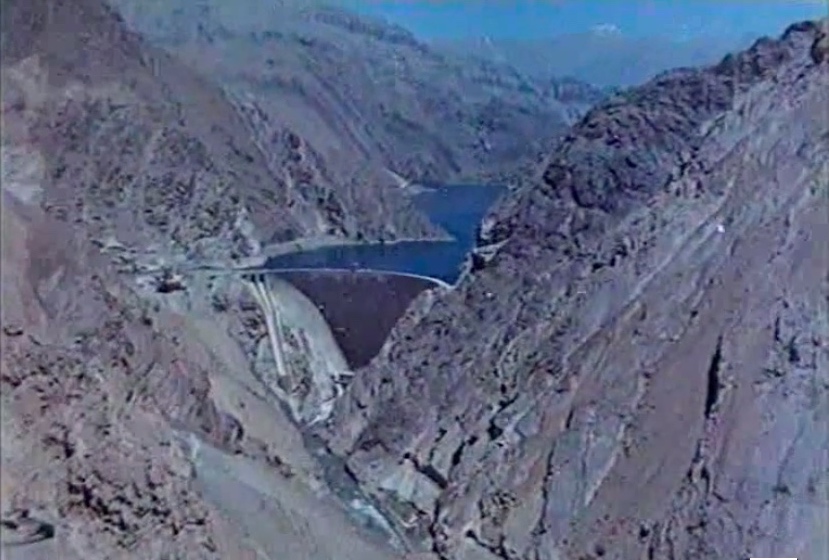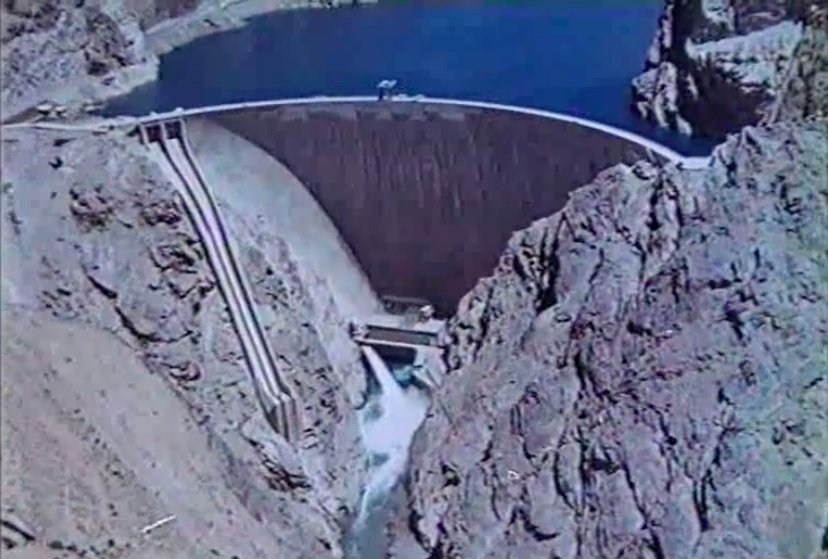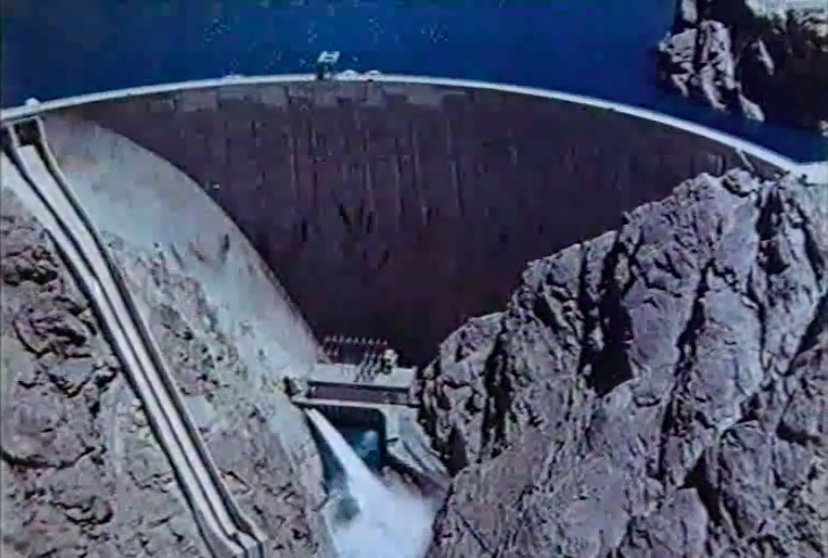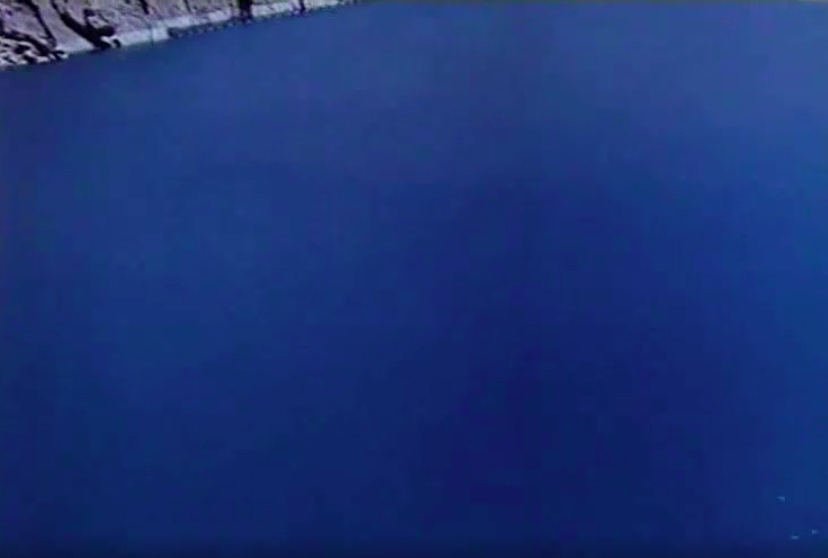The French-Iranian Film Connection ❹
Born in Paris in 1922, Albert Lamorisse is best known for his 1956 film The Red Balloon (Le ballon rouge). Though only 34 minutes long and with but a few lines of dialogue, this pint-size saga of an adventurous five-and-a-half-year-old boy and the clever, frolicsome balloon that befriends him is a cinema classic.

Lamorisse also has a modestly scaled, marvelously achieved place in the French-Iranian Film Connection, and a tragic one. In 1970, while filming a documentary about the landscape of Iran under the auspices of the Shah’s cultural ministry, he died in a helicopter crash at the age of forty-eight. A stylistic innovator, Lamorisse was a technical one as well. Assisted by a marine gyro specialist, he had designed a shock-absorbent camera rig specifically for helicopter use. The apparatus, dubbed Helivision, allowed shots with an effect as if “the camera were mounted on a perfectly solid track in the sky,” in the words of one film critic.
In fact, when he took to the sky for the final time, Lamorisse had already finished shooting the material he sought for his vision of a cinematic tone poem, a reverie on Iran’s boundless physical and cultural wonders—but the project’s funder had brought him back for more. The film was one of a number of coproductions with Western partners Iran had launched in the late 1960s to temper its autocratic image. The fact of the partnerships was usually as much the point as what they yielded, and Lamorisse had proceeded under the assumption of creative freedom. The Shah, though, was dismayed that the rough cut he saw did not reflect the dynamic, modernizing Iran he aimed to promote. As cinema scholar Hamid Naficy describes, officials of the Ministry of Culture and Art (MCA) echoed this view, expressing

dissatisfaction with the film, for they apparently missed its subtle nationalist figuration and felt that although it had represented Iran lovingly, it was a predominantly pastoral and ancient representation that neither matched Iranian reality nor the state’s idea of syncretic modernity. Lamorisse was recalled to film additional sequences to emphasize the country’s industrialization.
Upon Lamorisse’s return, among the new locations imposed on his remit, he filmed extensive handheld footage in the bowels of Tehran University’s U.S.-supplied research nuclear reactor, which had become operational in 1967. He was then urged to move on to another American construction, the Karaj Dam, 40 miles northwest of Tehran, where the MCA was eager to have him record some of his signature aerial footage—the Shah had specifically lamented the lack of dams in what he’d seen.

As insistent as they were that Lamorisse return to Iran, the ministry had not paid for his crew to come back as well, so he was now there alone with his wife and 20-year-old son, Pascal—the young boy in The Red Balloon. Significantly, he was without his experienced helicopter pilot. An expert pilot himself, Lamorisse conveyed his concern about flying near the high-tension wires surrounding the dam, so the Shah’s personal pilot was assigned to operate the helicopter. On June 2, 1970, Lamorisse, assisted by Pascal, made the flight up to the dam, where they shot about ten minutes worth of footage before the helicopter got caught in the wires. Pascal survived; his father and the pilot fell to their deaths.
Working from the notes detailing his original vision from the film, Lamorisse’s Iran documentary was ultimately completed by his widow, Claude Jeanne Marie (née Duparc), and Pascal. It was released in 1978 as The Lovers’ Wind (Le vent des amoureux). The Persian title, Bad-e Saba, is particularly resonant, evoking the gentle morning breeze that carries sweethearts’ secret messages to each other and the “perfume of the Beloved’s tresses,” as described in the love verses of Hafez. Some might agree with Naficy’s assessment that the film’s dreamy, fabulistic narration is “overly poetic and flowery”; with its muted delivery, it’s easy enough to tune out. As for Lamorisse’s sumptuous, swooping, thrillingly fluid visuals, there is no sensible ground for debate—the film is mesmerizing.

A seven-minute-long pendant to The Lovers’ Wind (it has been variously presented as a prologue or epilogue to the feature) was assembled by an MCA staff producer—not Claude and Pascal, as some have surmised—based on the footage Lamorisse shot after being called back. After an opening crawl in Persian, which asserts that ineluctable “destiny did not grant him the opportunity to finish” his film, his handheld shots from the reactor, many accelerated, play over the sound of fierce winds and eerie musical themes, creating a spectral mood. A piano dirge accompanies the final images he recorded at the dam, retrieved from the depths of its reservoir. In honor of the Frenchman’s terminal devotion to immortalizing Iran on film, and tying together distant strands of the French-Iranian Film Connection, Mohsen Makhmalbaf would open his Images from the Qajar Dynasty (1992) with a sequence from The Lovers’ Wind, dedicating the archival picture—which includes more than a dozen pieces shot by Akkasbashi—to Lamorisse.
For the rest of The French-Iranian Film Connection, click here: [1] [2] [3] 4 [5]